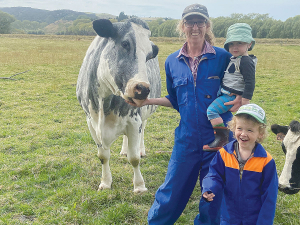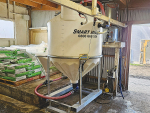Finance company Heartland and its recently acquired subsidiary PGG Wrightson Finance are encouraging farmers to consider that question.
The firms have just launched Heartland Stock Lease, a new tool for financing livestock which will release capital for other purposes and help cashflow planning, says the firms’ head of rural, Will Purvis.
For dairy farms, lease payments are scheduled for January to June to match cashflow and while comparisons with interest payments on borrowing and owning cattle are “a bit meaningless unless you work out the cashflow benefit,” the leases equate to borrowing at an interest rate of well under 10%, he says.
“The key is it’s costed and priced at a point that’s more attractive than the historic providers. And the other point is we provide that cashflow certainty.”
Once leases are signed, payments are fixed for the term agreed, which for dairy cows can be anything from two to five years.
However, there’s an option for the farmer to reduce or extend terms during the course of the contract.
Heartland may provide the cows, or buy existing stock and lease them back. A first payment of 20-40% of the value is due immediately, then it’s onto the agreed January-June payment schedule.
Leases are structured on cows depreciating to $800 at the end of the lease period.
“If they’re worth more than that we’ll pass that benefit onto the farmer. If they’re worth less, then the farmer owes the difference,” explains Purvis.
While Heartland will have the option of going to the open market with the cattle at the end of the contract period, in practice it’s envisaged the farmer will be given first refusal.
Throughout the lease period Heartland owns the cows, and may audit stock. There’s an undertaking on the farmer to replace deaths or repay accordingly.
“It is a complex concept. We like to sit down with the farmer and their accountant to see if it’s going to be right for them. There are many potential benefits for many farmers.”
Those include releasing capital to pay down debt or grow the business, cheaper financing, and probable tax advantages.
“We believe this qualifies as an operating lease, as per vehicle leases, so there are potential advantages from a tax perspective.”
Purvis says nationally about $20 billion of farmer funds are tied up in livestock.
“While it’s one of their most important assets, it’s also the biggest drain on their working capital.” Purvis told Dairy News.








